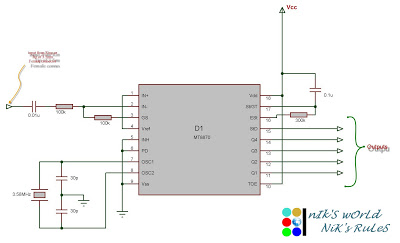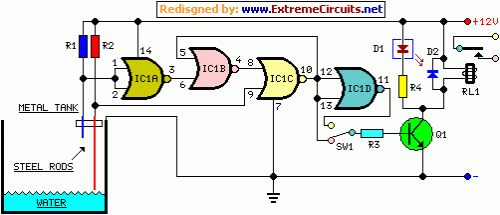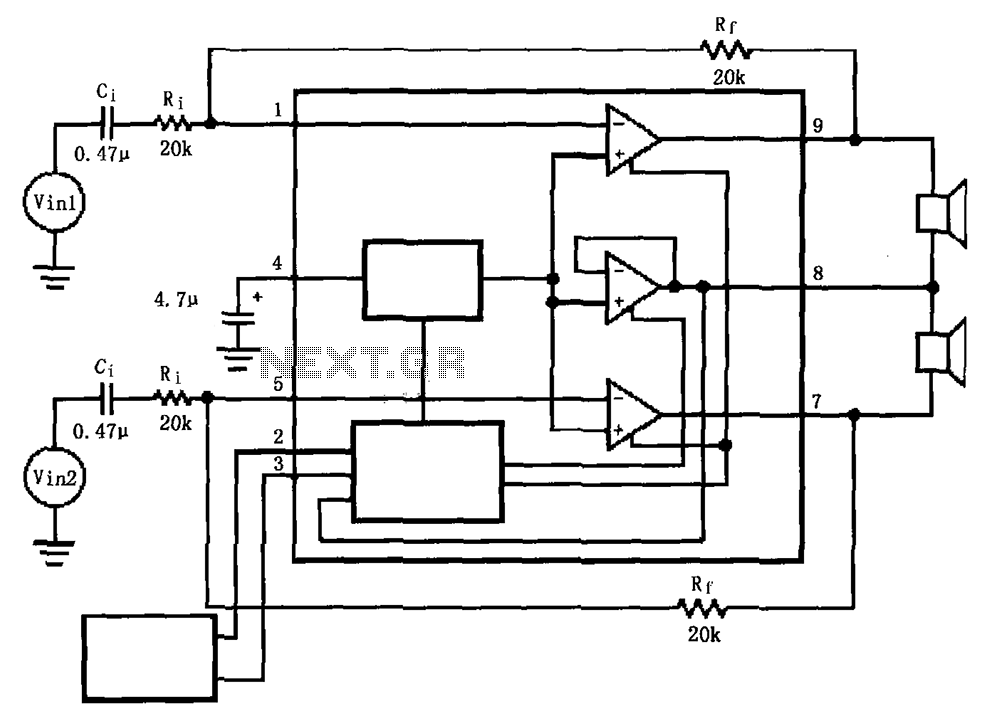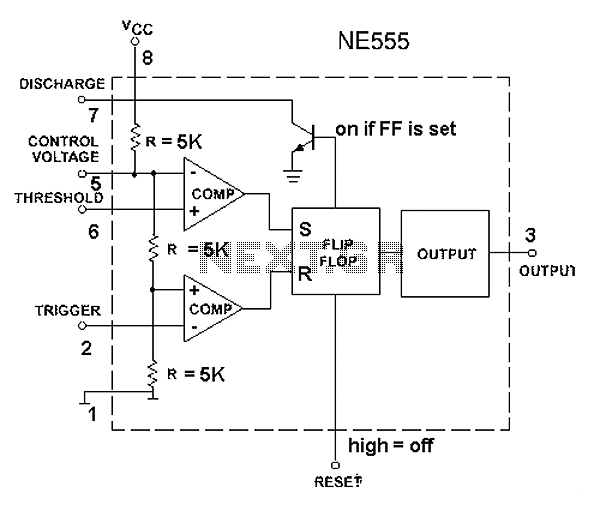
AC/DC 3 digits voltmeter circuit
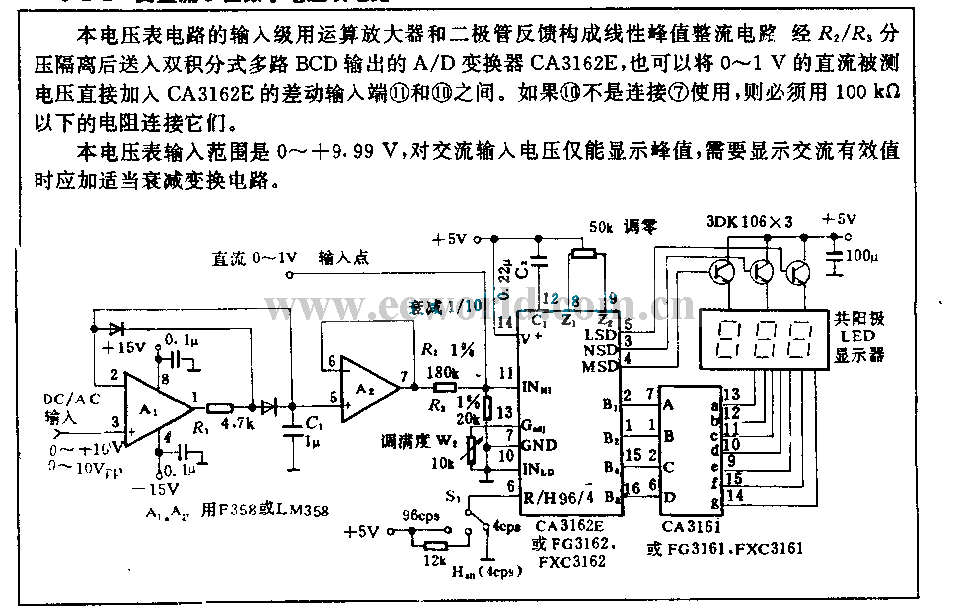
The input stage of this voltmeter circuit utilizes an operational amplifier and diode feedback to create a linear peak value rectifier circuit. A partial pressure isolation through resistors R1 and R2 directs the signal to a dual multi-channel BCD output A/D converter, CA3162E. Additionally, a 0 to 1V DC test voltage can be applied to the differential input terminals of CA3162E, specifically between the designated points, if one of the points is not in use.
The voltmeter circuit is designed to accurately measure and convert voltage signals into a digital format. At the core of the input stage is an operational amplifier configured in a peak rectifying mode. The operational amplifier amplifies the input voltage and, through diode feedback, ensures that the output reflects the peak value of the input signal with high linearity. This configuration minimizes distortion and improves the accuracy of the voltage measurement.
Resistors R1 and R2 are employed in a voltage divider configuration, allowing for partial pressure isolation. This arrangement facilitates the scaling of the input voltage before it is fed into the A/D converter. The CA3162E is a dual multi-channel BCD output A/D converter, which digitizes the analog voltage signal and outputs it in a binary-coded decimal format. This is particularly useful for applications requiring precise voltage readings in digital systems.
Furthermore, the circuit allows for the addition of a test voltage ranging from 0 to 1V DC. This feature enables the user to apply a reference voltage to the differential input terminals of the CA3162E, enhancing the versatility of the circuit. The ability to interface with a variety of input signals makes this voltmeter circuit suitable for a wide range of measurement applications in electronics and instrumentation.
Overall, this design effectively combines operational amplification, rectification, and digital conversion to create a reliable and accurate voltmeter circuit.The input stage of this voltmeter circuit uses operational amplifier and diode feedback to form linearity peak value rectifier circuit. Through R2/R2 partial pressure isolation, it is sent to double multi-channel BCD output A/D converter CA3162E, it also can add 0~1V DC tested voltage to CA3162E differential input terminal between ?
and ?, If ? is not used.. 🔗 External reference
The voltmeter circuit is designed to accurately measure and convert voltage signals into a digital format. At the core of the input stage is an operational amplifier configured in a peak rectifying mode. The operational amplifier amplifies the input voltage and, through diode feedback, ensures that the output reflects the peak value of the input signal with high linearity. This configuration minimizes distortion and improves the accuracy of the voltage measurement.
Resistors R1 and R2 are employed in a voltage divider configuration, allowing for partial pressure isolation. This arrangement facilitates the scaling of the input voltage before it is fed into the A/D converter. The CA3162E is a dual multi-channel BCD output A/D converter, which digitizes the analog voltage signal and outputs it in a binary-coded decimal format. This is particularly useful for applications requiring precise voltage readings in digital systems.
Furthermore, the circuit allows for the addition of a test voltage ranging from 0 to 1V DC. This feature enables the user to apply a reference voltage to the differential input terminals of the CA3162E, enhancing the versatility of the circuit. The ability to interface with a variety of input signals makes this voltmeter circuit suitable for a wide range of measurement applications in electronics and instrumentation.
Overall, this design effectively combines operational amplification, rectification, and digital conversion to create a reliable and accurate voltmeter circuit.The input stage of this voltmeter circuit uses operational amplifier and diode feedback to form linearity peak value rectifier circuit. Through R2/R2 partial pressure isolation, it is sent to double multi-channel BCD output A/D converter CA3162E, it also can add 0~1V DC tested voltage to CA3162E differential input terminal between ?
and ?, If ? is not used.. 🔗 External reference

